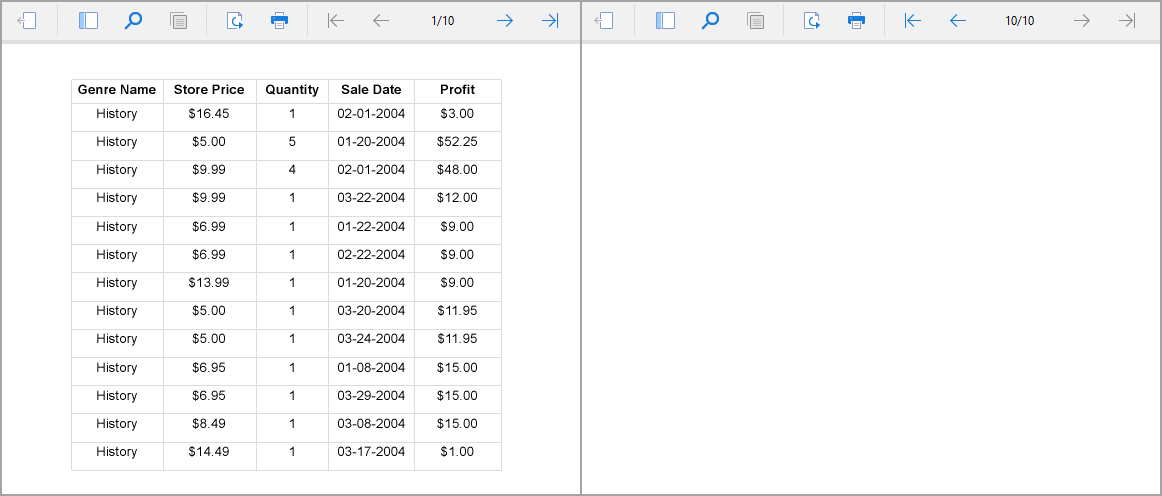You can control page breaks in data groups of data regions by using the NewPage property for data regions and its combination with the PageBreakAtStart, PageBreakAtEnd, and BreakLocation properties. These properties help you tune page breaks after or before a data group in your report and on which page to continue displaying the report content.
The NewPage property works for the data regions - List, Table, BandedList, Tablix, Container, TOC, and Chart, and has the following options.
You can use the NewPage property for the following data region groups:
See the possible combinations of NewPage with the PageBreakAtStart and PageBreakAtEnd properties.
| PageBreakAtStart | PageBreaktEnd | NewPage > Next | NewPage > Odd | NewPage > Even |
| False | False | No new page | No new page | No new page |
| False | True | A new page is added after the data region. | A new page is added after the data region and at odd page of the report. | A new page is added after the data region and at even page of the report. |
| True | False | A new page is added before the data region. | A new page is added before the data region and at odd page of the report. | A new page is added before the data region and at even page of the report. |
| True | True | A new page is added before and after the data region. | A new page is added before and after the data region and at odd page of the report. | A new page is added before and after the data region and at even page of the report. |
The image below uses a report that has a Table data region with the following properties:
As a result, the report renders 10 pages, a page break is added after a table, and a new page is added after the table at an even page (Page 10).

After the same properties are changed as
As a result, the report renders 11 pages, a page break is added before a table (Page 2), and a new page is added at odd page of the report (Page 1).
The BreakLocation property controls the break location of a data group. See the possible combination of the NewPage with the BreakLocation property.
| NewPage > Next | NewPage > Odd | NewPage > Even | |
| BreakLocation > None |
No page break |
||
| BreakLocation > Start | A page break is added before a new group. A new group starts from the next page of the report. | A page break is added before a new group. A new group starts from the next odd page of the report. | A page break is added before a new group. A new group starts from the next even page of the report. |
| BreakLocation > End | A page break is added after a current group. A new group starts from the next page of the report. 1 | A page break is added after a current group. A new group starts from the next odd page of the report. 1 | A page break is added before a new group. A new group starts from the next even page of the report. 1 |
| BreakLocation > StartAndEnd | A page break is added before and after a current group. A new group starts from the next page of the report. | A page break is added before and after a current group. A new group starts from the next odd page of the report. | A page break is added before a new group. A new group starts from the next even page of the report. |
| BreakLocation > Between | A page break is between groups. A new group starts from the next page of the report. 1 | A page break is between groups. A new group starts from the next odd page of the report. 1 | A page break is added before a new group. A new group starts from the next even page of the report. 1 |
1 The first group always starts on the first page.
In a report with multiple data regions, the behavior of the NewPage property is as follows: